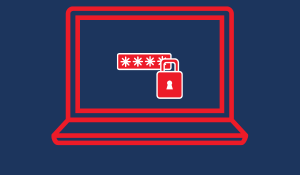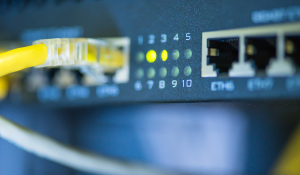In the current age of digitalization, companies across various sectors and sizes face a growing risk of cyberattacks. Despite implementing precautionary measures and security protocols, it is not always possible to entirely avert such attacks. Therefore, when an organization becomes a target of a cyberattack, it becomes imperative to swiftly and precisely respond to mitigate the harm, preserve customer trust, and resume normal business operations.
In this blog post, our aim is to present an outline of the actions organizations can take following a cyberattack to effectively recover and fortify their resilience in the face of such challenges. We will delve into established strategies and recommended practices that can assist you in safeguarding your systems, mitigating the impact, and undertaking the essential steps for recovery. Let's embark on a journey together to explore the measures businesses can adopt to emerge stronger from this pivotal juncture
.
Recognising cyberattack in YOUR companY
Companies can recognize that they are under a cyberattack by being vigilant and implementing robust security measures. Here are 10 signs and methods that can help identify a cyberattack:
- Network Traffic Analysis:
Companies should monitor their network traffic for any unusual or suspicious activities. A sudden increase in data transfers, unexpected connections to unfamiliar IP addresses, or large amounts of outgoing data can indicate a potential cyber attack.
- Intrusion Detection Systems (IDS):
IDS tools can detect and alert organizations to potential security breaches or unauthorized access attempts. These systems analyze network traffic patterns and compare them against known attack signatures or abnormal behavior.
- Anomaly Detection:
Implementing anomaly detection systems can help identify unusual or abnormal behavior in the network or system. This involves establishing baseline behavior patterns and then flagging any deviations from the norm, which may indicate a cyber attack.
- Endpoint Protection:
Endpoint Protection solutions, such as antivirus software and host intrusion detection systems, can detect and block malicious software or unauthorized activities on individual devices. Unusual behavior or the detection of malware on endpoints can be a sign of a cyber attack. Lesen Sie mehr über unsere Zero Trust Platform mit Lösungen für Endpoint Security und Endpoint Protection.
- Security Information and Event Management (SIEM):
SIEM systems collect and analyze security-related logs from various sources, including network devices, servers, and applications. By correlating events and identifying patterns, SIEM can help organizations detect cyber attacks and respond promptly.
- Phishing Awareness:
Educating employees about phishing techniques and encouraging them to report suspicious emails or messages can help identify targeted attacks. Monitoring and analyzing email traffic for phishing attempts can also aid in detecting cyber threats.
- System Performance Issues:
Unexpected slowdowns, crashes, or unavailability of critical systems may indicate a cyber attack. Attackers often exploit vulnerabilities, causing disruptions in system performance or denial of service.
- Unusual Account Activities:
Monitoring user accounts for unusual activities, such as failed login attempts, unauthorized access, or privilege escalation, can help identify potential cyber attacks. Implementing multi-factor authentication and access controls can enhance security in this regard.
- Security Incident Response Planning:
Having a well-defined incident response plan in place can ensure a swift and effective response when a cyber attack occurs. This plan should include steps to isolate affected systems, analyze the attack, mitigate the damage, and restore normal operations.
- Threat Intelligence:
Staying updated on the latest cyber threats, vulnerabilities, and attack techniques through threat intelligence sources can help companies proactively recognize signs of an ongoing or imminent cyber attack.
10 steps to take when your company is a Cyber Attack
If you discover that your business has been the victim of a cyberattack, it is important to act quickly to limit the damage and minimise the impact on your business. Here are the essential steps you should take:
- Activate Incident Response Plan: If your company has an incident response plan in place, follow it immediately. The plan should outline the necessary steps and responsibilities for addressing cyber attacks. Notify the relevant stakeholders, such as IT staff, management, and legal personnel, about the incident.
- Isolate Affected Systems: Quickly isolate the affected systems from the network to prevent further spread of the attack. Disconnect compromised devices or affected servers from the network to limit the attacker's access and protect other systems.
- Preserve Evidence: Preserve any evidence related to the cyber attack. Document any unusual activities, take screenshots, and collect logs and other relevant information. This evidence can be valuable in investigating the incident, identifying the attacker, and pursuing legal action if necessary.
- Engage IT and Security Teams: Involve your IT and security teams to analyze the attack, identify vulnerabilities, and assess the impact on your systems. They can help contain the attack, restore affected systems, and implement additional security measures.
- Notify Law Enforcement: If the cyber attack is significant or involves theft, data breaches, or other criminal activities, report the incident to law enforcement agencies. Provide them with the evidence and cooperate with their investigation.
- Communicate with Stakeholders: Keep your employees, customers, and other relevant stakeholders informed about the incident. Provide updates on the situation, the steps being taken to address the attack, and any necessary actions they should take to protect themselves.
- Assess and Remediate Vulnerabilities: Conduct a thorough assessment of your systems and infrastructure to identify any vulnerabilities or weaknesses that allowed the attack to occur. Patch or fix these vulnerabilities to prevent similar attacks in the future.
- Data Breach Response: If the cyberattack involves a data breach or unauthorized access to sensitive information, follow applicable data breach notification laws and regulations. Inform affected individuals about the breach, the potential impact on their data, and any steps they can take to protect themselves.
- Improve Security Measures: Learn from the incident and enhance your organization's security measures. Implement stronger access controls, update security policies, educate employees about cybersecurity best practices, and consider investing in advanced security technologies to prevent future attacks.
- Conduct a Post-Incident Analysis: After the situation is under control, conduct a thorough post-incident analysis. Evaluate the effectiveness of your response, identify areas for improvement, and update your incident response plan accordingly.
Each case of a cyberattack is unique and the specific actions taken may vary depending on the nature and scope of the incident. It is advisable to also bring in external experts to help you deal with the cyberattack and ensure that all necessary steps are taken.
How can companies be successfully rebuilt after a cyberattack?
After a cyberattack, successfully rebuilding a business is critical to restoring business continuity and regaining the trust of customers, partners and employees. Here are some key steps businesses can take to successfully rebuild after a cyberattack:
- Conduct a Post-Incident Analysis:
Perform a thorough analysis of the cyberattack to understand its root causes, vulnerabilities exploited, and the effectiveness of your response. Identify the weaknesses and gaps in your security measures and address them promptly.
- Update Security Measures:
Strengthen your security infrastructure by implementing the lessons learned from the cyberattack. This may involve enhancing firewalls, intrusion detection systems, and antivirus software. Regularly patch and update your systems and applications to protect against known vulnerabilities.
- Enhance Employee Education and Awareness:
Educate your employees about cybersecurity best practices, including recognizing phishing attempts, creating strong passwords, and exercising caution while handling sensitive data. Conduct regular training sessions to keep them updated on the latest threats and prevention techniques.
- Implement Multi-Factor Authentication (MFA):
Enable MFA across your organization to add an extra layer of security. By requiring multiple forms of authentication, such as passwords and biometrics, you reduce the risk of unauthorized access even if credentials are compromised.
- Regularly Backup and Test Data Recovery:
Implement a robust data backup strategy that includes regular backups and offsite storage. Test the restoration process periodically to ensure backups are functional and complete. This helps mitigate the impact of data loss in the event of another attack.
- Implement Least Privilege Access:
Restrict user access to the minimum necessary privileges required to perform their roles. Limiting access rights reduces the potential damage that can be caused by compromised accounts and helps contain the impact of a cyberattack.
- Conduct Vulnerability Assessments and Penetration Testing:
Regularly assess your systems for vulnerabilities through vulnerability scanning and penetration testing. Identify weaknesses and address them proactively to close potential entry points for attackers.
- Establish Incident Response Plan:
Develop a comprehensive incident response plan that outlines the steps to be taken in the event of a cyberattack. Assign responsibilities, define communication channels, and establish a clear escalation process to ensure an organized and effective response.
- Engage Third-Party Security Experts:
Collaborate with external cybersecurity professionals who can conduct audits, provide security assessments, and offer recommendations to enhance your security posture. Their expertise and fresh perspective can help identify blind spots and bolster your defenses.
- Stay Informed and Updated:
Stay vigilant by staying informed about the evolving threat landscape. Regularly monitor security advisories, subscribe to threat intelligence services, and participate in industry forums to stay up to date on emerging threats and mitigation techniques.
- Continuous Monitoring and Response:
Implement a comprehensive monitoring system to detect signs of attacks or suspicious behaviour in real time. Rapid intervention can help minimise damage and limit the impact of an attack.
Rebuilding after a cyberattack requires time, resources, and a comprehensive strategy. By following these steps and continually investing in your organisation's security, you can increase resilience to future attacks and restore confidence in your business.
PROTECTION AGAINST CYBERATTACKS WITH DRIVELOCK
Companies can minimise the risk of cyberattacks by training and raising awareness among their employees while taking appropriate IT security precautions. DriveLock Security Service is managed by experts, out-of-the-box, resource-efficient, customisable and highly secure. The DriveLock Zero Trust Platform can be tested free of charge and risk-free for 30 days to experience its performance.
While a cyberattack can have severe implications for a company, a well-planned and swift recovery process can help organizations bounce back stronger. By following these strategic steps, you can minimize the impact, restore operations, and bolster your defenses to mitigate future attacks. Remember, resilience and adaptability are key to navigating the aftermath of a cyberattack and emerging stronger than before.
 DriveLock
Jul 17, 2023 9:28:26 AM
DriveLock
Jul 17, 2023 9:28:26 AM


